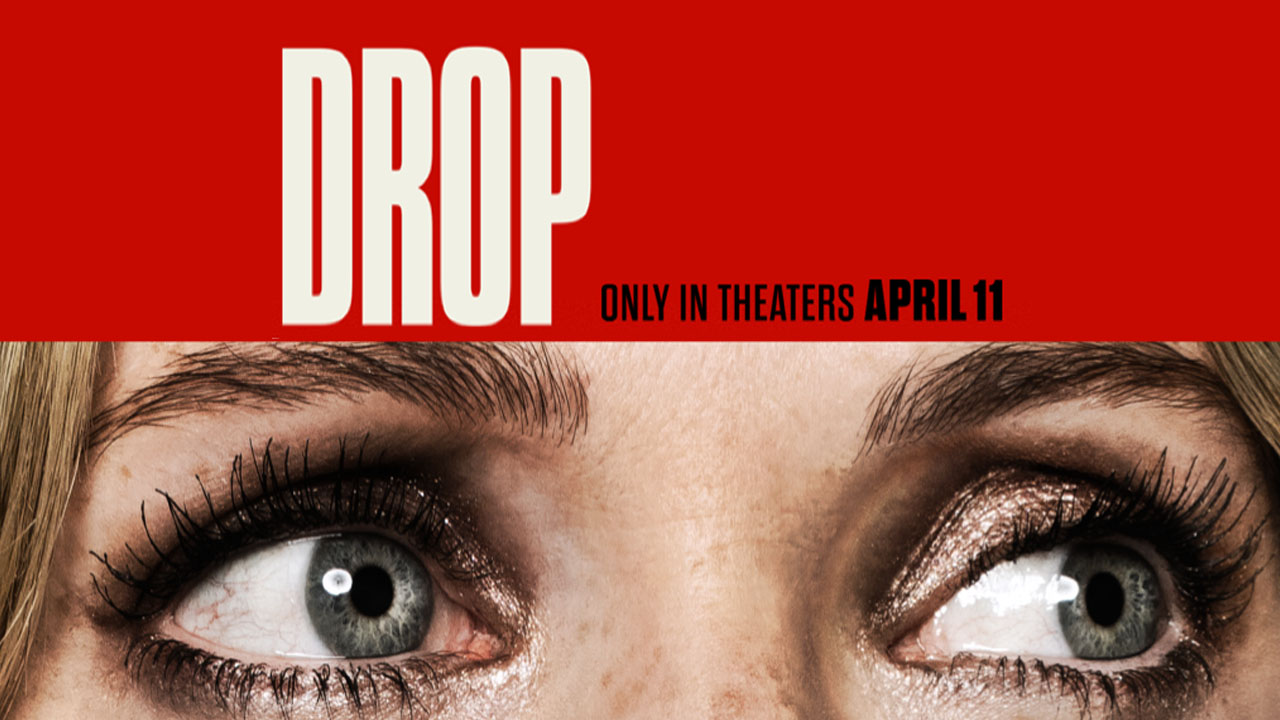It’s not often I feel transported through time and space while watching a film. Seriously. As Drop unfolded before my eyes, I was a preteen again in rural East Texas. We had only a few channels and a bunch of VHS tapes full of movies. I don’t mean the official ones with studio artwork on the dust covers—I’m talking about the long-play, taped-from-TV kind, three movies per cassette, neatly labeled in my mom’s or grandmother’s handwriting.
I really just wanted to watch Ghostbusters for the millionth time or Return of the Jedi for the million-and-first. But Drop is the kind of made-for-TV movie I had to fast-forward through every single time. I knew I shouldn’t—it wears out the tape, and adjusting the tracking doesn’t always help. But I had Ewoks to watch. And thank God for Legos. That was when I came to: no Ewoks, no Legos, and it was still the first act.
If you’ve made it through my fever dream, you’ve probably gathered this wasn’t the highlight of my week. In all seriousness—if that’s still possible at this point—Drop isn’t the worst film I’ve ever seen, but it’s yet another entry in a long line of thrillers that would be over in 10 minutes if the characters reacted like normal human beings. I wish I had pressed fast-forward.
The basic plot of Drop revolves around Violet, a widowed single mother played by Meghann Fahy, who’s venturing out on her first date in years. Naturally, the evening spirals into a high-stakes nightmare. She finds herself ensnared in a tech-driven conspiracy that threatens the lives of her son and sister.
Things begin innocently enough, until Violet receives unsettling “drops” from a stranger. The drops are supposedly like iPhone AirDrops, but instead of files or photos, they’re more like anonymous text messages—sort of? This major plot device arrives early, and I had to wonder if writers Jillian Jacobs and Chris Roach have ever owned a smartphone.
I had so many questions. When Violet first gets the weird messages, why doesn’t she block the sender? The app is on her phone—how does she not know what it is? She ignores multiple messages before it’s revealed a gunman is inside her house. Any normal person would’ve uninstalled the app or muted it—anything other than passively reacting to a digital prankster with sinister intent.
She won’t turn off her phone because she’s “clingy” with her son, who’s with her sister. But she’s on a date. Turn the phone off. Speaking of her date, if Henry (Brandon Sklenar) were a real person, he’d deserve a medal—or at least a psychological evaluation. Somehow, he tolerates Violet’s increasingly flaky and erratic behavior long before she even knows there’s a gunman involved. After the reveal, his continued patience stretches the limits of believability.
Those are just the issues with the tech. The film is barely held together from scene to scene by contrived plot devices, cringeworthy characters, and lackluster writing. The characters are baffling and dense, lacking depth or development.
It’s clear that director Christopher Landon was aiming for a smart thriller, but this simply isn’t it. Known for genre-blending films like Freaky and Happy Death Day, Landon excels at horror-comedy, not Hitchcockian thrillers. The “twists” are telegraphed from a mile away. The result is less Hitchcock and more Hallmark.
The visual style doesn’t help. The lighting and camerawork are jarring and distracting. Not “intriguing” distracting—just bad. Sudden shifts in tone, strange continuous shots, and forced eeriness pull viewers out of the experience instead of immersing them. Blumhouse Productions, one of the three studios behind the film, seems to have leaned heavily on aesthetics borrowed from its hits like Sinister and Insidious. Unfortunately, that style doesn’t translate to a high-rise dinner thriller.
Plenty of viewers will probably enjoy Drop. They’ll excuse its flaws and empathize with its luddite protagonist. As for me? I say: do better. The movie fails on nearly every front. I’d rather watch Joker: Folie à Deux again. It’s a 1.


